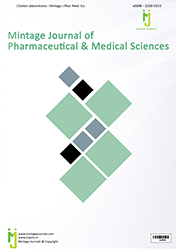Abstract
ECOLOGICAL SUCCESSION PATTERN OF THE INSECT SPECIES ASSOCIATED WITH THE CARCASS OF THE FREE-RANGING URBAN DOG,Canis domesticus(L.): A TOOL FOR FORENSIC ENTOMOLOGY
Author(s): FARZANA PERVEEN* AND ANZELA KHAN
The free-ranging urban dog, Canis domesticus(L.) carcass decomposition in tropical region, i.e., Takht-i-Bahi, Mardan, Khyber Pakhtunkhwa, Pakistan during 15-25 May 2011 was characterized by 5 stages, i.e., fresh (12 h), bloated (13-48 h), active (49-96 h), advanced (97-144 h) and dry (145-265 h) and the ecological succession pattern of insect species collected were identified into 11 species of 3 orders. The insect species associated with the carcass of C. domesticusfound that the blow flies, Chrysomya rufifacies(Macquart) and house fly, Muscadomestica(Linnaeus, 1758) were found in the fresh, bloat and active decay stages. However, the blow fly, C. megacephala(Fabricius); flesh fly, Parasarcophaga ruficornis(Meigen) and the hornet wasp, Vespa orientalis(Linnaeus) were existed in the fresh and bloat stages. Moreover, cheese fly, Piophila casei(Linnaeus) was found bloat and active decay stages. Further, the hide beetle, Dermestes maculates(Geer), clown beetle, Hister sp.(Gullenhal); ham beetle, Necrobia rufipes(Fabricus) and skin beetle, Trox sp.(Harold) completed their life cycle in active decay, advance decay and dry stages. Furthermore, the jummper ant, Myrmecia pilosula(Smith) was collected from only fresh stage. The specimens of insect species were collected minimum 0.8% of V. orientalisand maximum 21.3% of 2 species, i.e., C. rufifaciesand M. domestica. The temperature, humidity and rainfalls were found affected insect larvae, pupae and adults, and rate of decomposition of C. domesticus. The average temperature, humidity and rainfalls were 35.34±1.54, 38.8% and 3.8 mm, respectively, of 11 experimental days. This research will be helpful for forensic entomologist for a case study of death to investigate of crimes in tropical region of Pakistan

ISSN: 2320-3315
ICV :81.58

